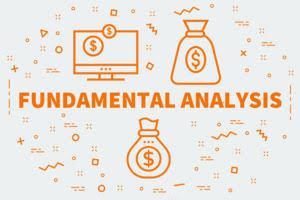Content
- US GAAP vs IFRS: Disclosures and Terminology
- Debt Issuance Costs (ASU 2015-
- Consumer Products & Retail
- ACCOUNTING MATTERSIs it U.S. GAAP or IFRS? Understanding how R&D costs affect ratio analysis
- RTX begins fabrication of 1MW generator for Air Force Research Laboratory
- Financial Services & Investing Overview

They are designed to help investors understand average capital spending and taxation for the company. What follows is an overview of the differences between the accounting frameworks used by GAAP and IFRS. This is at a broad, framework level; differences in accounting treatments for individual cases may also be added as this gets updated. By being more principles-based, IFRS, arguably, represents and captures the economics of a transaction better than GAAP.
- R&D providers must also expense the costs of performing R&D service for customers.
- Problems with SSAP 13 SSAP 13 is not in line with the newer International Accounting Standard covering this area.
- To conclude our section on how US GAAP and IFRS differ, another area of variance is the information required to be disclosed within the footnotes of the financial statements, as well as the terminology frequently found in filings.
- Under GAAP, only discontinued operations that represent strategic shifts that will either have a major impact on an organization’s operations or its financial results must be reported.
- On top of that, companies outside the US may also prepare their financial statements under GAAP.
Some companies use R&D to update existing products or conduct quality checks in which a business evaluates a product to ensure that it is still adequate and discusses any improvements. If the improvements are cost-effective, they will be implemented during the development phase. https://www.bookstime.com/statement-of-retained-earnings-example A company’s cash flow statement is also prepared differently under GAAP and IFRS. Deciding which set of standards to use depends on whether your company operates in the US or internationally. Work is being done to converge GAAP and IFRS, but the process has been slow going.
US GAAP vs IFRS: Disclosures and Terminology
Under the GAAP, either the LIFO or FIFO (First in First out) method can be used to estimate inventory. The value of a company’s assets may fluctuate over a given period, meaning they need to be re-evaluated (i.e., reappraised). Asset revaluation is crucial because it can help you save for replacement costs of fixed assets once they’ve run through their useful lives, and gives investors a more accurate understanding of your business. Asset revaluation can also reduce your debt-to-equity ratio, which can paint a healthier financial picture of your company.
US GAAP requires that interest expense, interest income and dividend income be accounted for in the operating activities section, and dividends paid be reported in the financing section. Debts that the company expects to repay within the next 12 months are classified as current liabilities, while debts whose repayment period exceeds 12 months are classified as long-term liabilities. On the contrary, IFRS sets forth principles that companies should follow and interpret to the best of their judgment. Companies enjoy some leeway to make different interpretations of the same situation.
Debt Issuance Costs (ASU 2015-
Some or all of the services described herein may not be permissible for KPMG audit clients and their affiliates or related entities. Access and download collection of free Templates to help power your productivity and performance.

A company can purchase the service for research and development, and it can also arrange its research and development program. Any money spent by the company on research work or on the development of the product or service can be recorded as a cost of research and development as an expense of the current period or for that period in which accounting for r&d this cost has been incurred. The company needs to disclose the total cost which is incurred on research and development in their financial statement. In accounting, development costs are the internal costs of developing intangible assets—assets with no physical form, like patents, intellectual property, and client relationships.
Consumer Products & Retail
GAAP requires companies to segregate extraordinary items in the income statement. Instead of treating them as a part of that statement, it entails showing them below net income. These companies can report extraordinary items as a part of the income statement.


